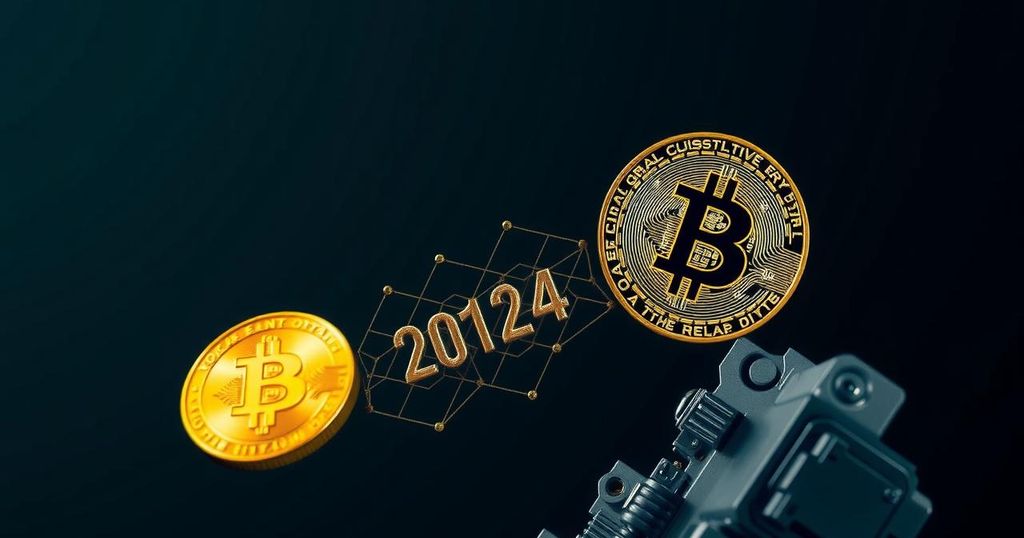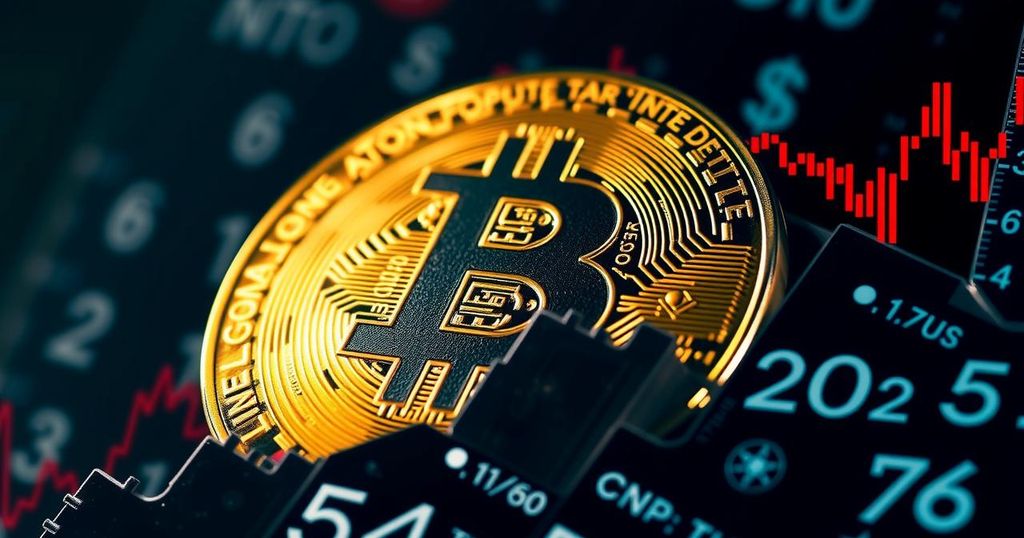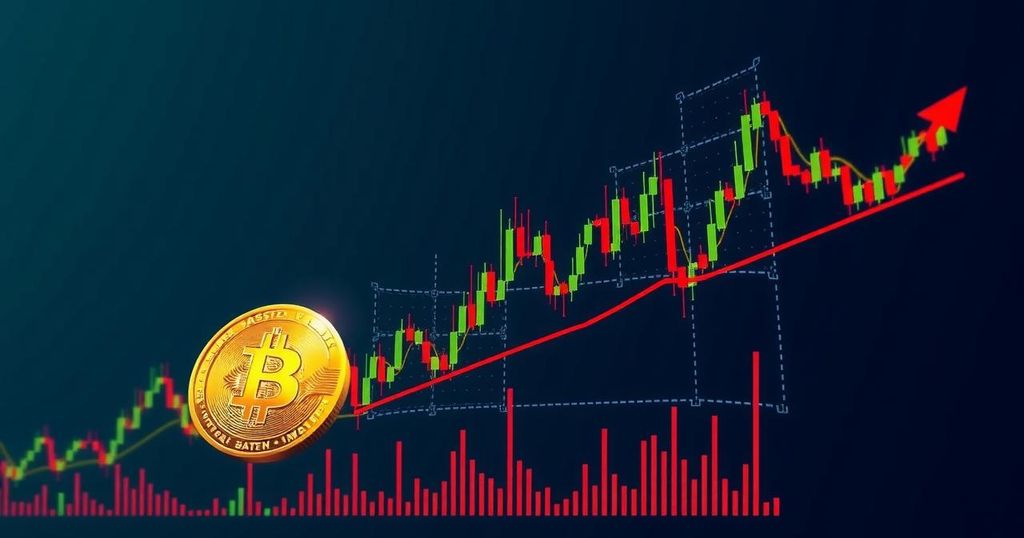Gold Price Declines as Bitcoin and Stocks Experience Notable Surge
On October 14, 2024, gold prices fell as stocks and Bitcoin surged, with Bitcoin nearly reaching $66,000 due to significant whale buying. The gold market faced challenges, including a stronger dollar and ineffective Chinese stimulus, resulting in a decline in gold prices. Cryptocurrency-linked companies in the U.S. also reported substantial gains amid the crypto rally.
On Monday, October 14, 2024, the financial markets exhibited a stark contrast as gold prices faltered amid a resounding surge in Bitcoin and stock valuations. Investors demonstrated a notable appetite for risk, notwithstanding ongoing apprehensions regarding potential interest rate adjustments against a backdrop of persistent inflation concerns. Bitcoin prices ascended to $66,000 following a substantial buying pressure from major investors, often referred to as whales. In the gold market, conditions remained volatile as the yellow metal faced challenges despite initial gains earlier in the day. By 2:35 PM ET, spot gold had registered a minor decline of 0.2%, settling at $2,649.98 per ounce, while U.S. gold futures decreased by 0.4% to $2,665.60. Factors contributing to this downward trend included lackluster economic stimulus from China, which is the largest global consumer of gold, combined with a robust U.S. dollar that reached two-month highs, thereby limiting gold’s price momentum. Phillip Streible, Chief Market Strategist at Blue Line Futures, articulated that gold is encountering numerous headwinds, such as Chinese stimulus measures, a stronger dollar, and declining prices in base metals. He indicated that the recent record increase in gold prices may have dampened investor sentiment, particularly within the Chinese market. Zain Vawda, a market analyst at MarketPulse by OANDA, observed a nuanced picture concerning Chinese economic data, suggesting that while weak data may curtail gold demand, a broader economic slowdown could enhance gold’s attractiveness as a safe haven. Conversely, Bitcoin saw significant gains, nearing two-week peaks driven by intensified buying activity in the U.S. market. Reports highlighted the buying behavior of Bitcoin whales who were actively purchasing at current price levels. On October 14, cryptocurrency-linked equities in the U.S. exhibited noteworthy increases as Bitcoin briefly hit $66,400. Key players in the crypto sector, such as miner CleanSpark and exchange Coinbase, reported substantial price escalations, reflecting the broader market enthusiasm surrounding cryptocurrencies. In summary, the divergence observed between gold and Bitcoin exemplifies the current investment climate characterized by fluctuating confidence in different asset classes, amid broader economic concerns.
The divergence between gold prices and Bitcoin values reflects underlying economic conditions and investor sentiment. Gold, often regarded as a safe-haven asset, is currently challenged by a stronger U.S. dollar and economic dynamics in China, which have influenced its market performance. In contrast, Bitcoin and other cryptocurrencies are experiencing heightened investor interest, driven by significant buying activity and market momentum, especially following price movements leading up to the peak experienced on October 14, 2024. The backdrop of ongoing inflation concerns and potential interest rate adjustments further complicates the investment landscape, prompting varying responses across asset classes.
The financial landscape on October 14, 2024, highlighted a clear division between the performance of gold and cryptocurrencies, primarily driven by market sentiment, economic indicators, and investor behavior. While gold faced multiple headwinds, including a stronger dollar and uncertain Chinese economic data, cryptocurrencies like Bitcoin surged due to increased buying pressure from major investors. This scenario underscores the complex dynamics affecting asset values and the varying trajectories that different investment classes can take amid broader economic conditions.
Original Source: www.markets.com





Post Comment